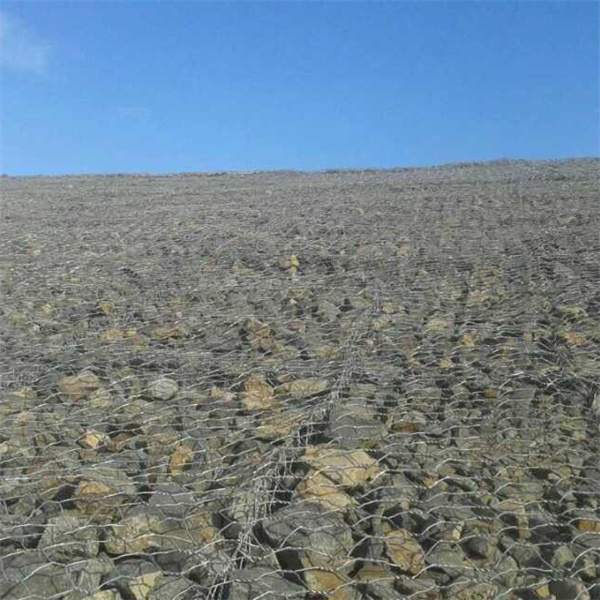พ.ย. . 28, 2024 02:36 Back to list
Leading Manufacturer of Freestanding Gabion Walls for Durable Landscape Solutions
The Rise of Free Standing Gabion Walls A Comprehensive Overview of Manufacturers
In recent years, the construction industry has seen a significant shift towards sustainable and innovative building materials. One such material that has garnered attention is the gabion wall. Particularly, free standing gabion walls have emerged as a popular choice for both aesthetic and functional applications. This article delves into the characteristics, advantages, and role of manufacturers in the production of free standing gabion walls.
Understanding Gabion Walls
Gabion walls are structures made from wire mesh cages filled with rocks, stones, or sometimes concrete. The term gabion itself comes from the Italian word 'gabbione', which means 'big cage'. These walls can be constructed in various designs and sizes, making them versatile for several uses, from landscape design to erosion control and even sound barriers.
What Are Free Standing Gabion Walls?
Unlike traditional gabion walls, which may often be affixed to a foundation or other structural elements, free standing gabion walls are designed to stand independently. This independence allows for flexibility in design and application, enabling architects and designers to create unique and visually appealing structures without the constraints of permanence. They can be used as decorative features in gardens, privacy screens, or even as decorative border features in public spaces.
Advantages of Free Standing Gabion Walls
1. Aesthetic Appeal One of the primary reasons for the popularity of free standing gabion walls is their aesthetic versatility. They can be tailored to fit various architectural styles and landscaping preferences. By using different types of fill materials, such as colorful stones or recycled materials, these structures can become focal points within a space.
2. Sustainability Gabion walls align well with the growing demand for sustainable construction practices. Since they often utilize local stone or recycled materials, they reduce the carbon footprint associated with transporting building materials. Additionally, gabion walls have a low environmental impact, allowing vegetation to grow through them, which can enhance biodiversity.
3. Durability and Stability Free standing gabion walls are inherently robust due to the weight of the stones they contain. This natural stability enables them to withstand weather impacts, making them a suitable choice for different climates. They resist erosion and can hold up against high water flow rates, making them an effective solution for areas prone to flooding.
free standing gabion wall manufacturer

4. Cost-Effectiveness Compared to traditional materials like concrete or brick, gabion walls can often be more economical. The material used for filling can be sourced locally, which significantly reduces transportation costs. Moreover, they require minimal maintenance over time, making them a financially prudent choice.
The Role of Manufacturers
As the demand for free standing gabion walls continues to grow, manufacturers are adapting to meet the industry's needs. The role of a gabion wall manufacturer is critical in ensuring that these structures meet quality, safety, and design specifications.
1. Material Quality Manufacturers must source high-quality wire mesh and fill materials to ensure the longevity of the gabion walls. The steel used for the wire mesh must be galvanized or PVC-coated to withstand corrosion and environmental factors.
2. Customization Leading manufacturers now offer custom design services, enabling architects and builders to specify sizes, shapes, and fill materials. This customization ensures that the final product aligns perfectly with the intended use and aesthetic of a project.
3. Technical Expertise Manufacturers often provide essential technical support and advice regarding the installation of free standing gabion walls. This can include guidance on engineering principles and the best practices for construction, ensuring safe and effective use of gabion technology.
4. Sustainability Practices Many manufacturers are now committed to sustainable practices in their production processes. This can include using recycled materials for both the wire mesh and the fill, further enhancing the eco-friendliness of gabion walls.
Conclusion
Free standing gabion walls represent a merging of functionality, aesthetics, and sustainability in modern construction. Their versatility and durability make them an attractive option for a variety of applications. As manufacturers continue to innovate and adapt to market demands, the future of free standing gabion walls looks bright, with endless possibilities for creative construction solutions. Whether in commercial projects or residential landscaping, these structures are set to make a lasting impact in the world of architecture.
-
Visualizing Gabion 3D Integration in Urban Landscapes with Rendering
NewsJul.23,2025
-
The Design and Sustainability of Gabion Wire Mesh Panels
NewsJul.23,2025
-
The Acoustic Performance of Gabion Sound Barriers in Urban Environments
NewsJul.23,2025
-
Mastering the Installation of Galvanized Gabion Structures
NewsJul.23,2025
-
Gabion Boxes: Pioneering Sustainable Infrastructure Across the Globe
NewsJul.23,2025
-
Custom PVC Coated Gabion Boxes for Aesthetic Excellence
NewsJul.23,2025
-
Installation Tips for Gabion Wire Baskets in Erosion Control Projects
NewsJul.21,2025






